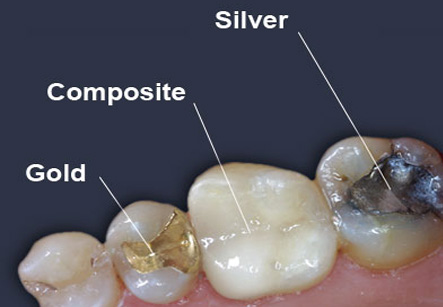Fillings
Introduction
A filling is a technique used to restore a tooth damaged by decay back to its normal function and shape. When a dentist gives a filling to the patient, first the decayed tooth material is removed, the affected area is cleaned, and then the cleaned out cavity is filled with a filling material. A filling also helps prevent further decay by closing off spaces where bacteria can enter. Materials used for fillings include gold, porcelain, a composite resin (also known as tooth-colored fillings), and an amalgam (which is an alloy of mercury, silver, copper, tin and zinc sometimes).
Different types of fillings
1. Gold fillings:
• Dentists need to order these fillings from a dental laboratory and then cemented into place.
• Gum tissues can tolerate gold inlays very well and may last for more than 20 years.
Iran offers a superior Dental treatments that is world best quality. For patients from the USA, and Europe for example, the savings can be 60% or more

• Hence, many authorities consider gold as the best filling material.
• Conversely, it is often the most costly choice and needs multiple visits.
2. Porcelain fillings:
• A porcelain restoration generally covers most of the tooth.
• These are called inlays or onlays.
• These fillings are produced to order in a lab and then bonded to the tooth in the dentists’ clinic.
• They generally resist staining.
• These fillings can be matched to the color of the tooth.
• The cost is similar to gold.
3. Composite (plastic) resins:
• These can be matched to be the same color as the patient’s teeth and thus can be used where a natural appearance is desired (such as front teeth).
• The components are mixed and placed directly into the cavity, where they get hardened.
• Composites may chip or wear out after some time, so it may not be the ideal material for large fillings.
• These fillings can also become stained from coffee, tea or tobacco.
• They do not last as long as other types of fillings generally from three to ten years.
4. Amalgam (silver) fillings
• They are resistant to wear and tear
• These fillings are relatively inexpensive.
• Conversely, they are more noticeable than porcelain or composite restorations due to their dark color.
• They are not usually used in very visible areas, such as front teeth.
Procedure
• Dentist needs to test the area to determine if all the decay has been removed.
• The dentist uses a local anaesthetic to numb the area around the tooth to be filled.
• The decayed area is removed by using a drill, air abrasion instrument or laser.
• The choice of instrument depends on the individual dentist’s comfort level, training, and investment in the particular piece of equipment as well as location and extent of the decay.
• Once the decay has been removed, the dentist will prepare the space for the filling by cleaning the cavity of bacteria and debris.
• If the decay is near the root, the dentist may first put in a liner made of glass ionomer, composite resin, or other material to protect the nerve.
• Generally, after the filling is in, dentist will finish and polish it.
Additional steps may be required for tooth-colored fillings:
• After dentist removes the decay and cleans the area, the tooth-colored material is applied in layers.
• A special light that cures each layer is applied.
• When the multilayering process is completed, the dentist will shape the composite material to the desired result, trim off any excess material, and polish the final restoration.